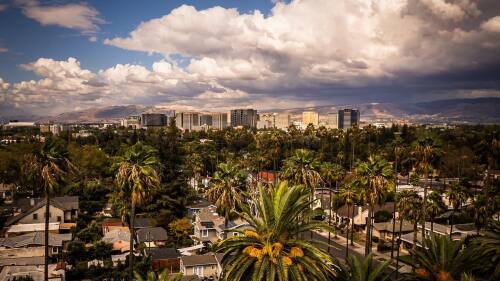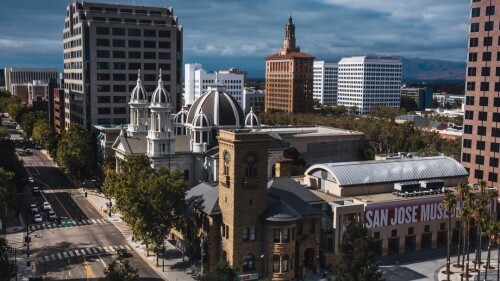There’s no doubt that San Jose boasts a wide range of architectural influences that’s as diverse as our community.
We previously highlighted the history and characteristics of Victorian homes, so now we’re taking a look at a style that is almost quintessentially San Jose — Spanish Revival.
📐 Where did it come from?
In 1915, San Diego hosted the Panama-California Exposition to celebrate the opening of the Panama Canal. For the first time in the history of US expositions, a design theme was chosen: Spanish Colonial Revival Architecture.
A few years later in 1917, local San Jose architect Frank Wolfe partnered with Santa Clara architect William Ernest Higgins and they quickly became early adopters of the style — building close to 500 homes within 14 years.
Explore further: “Wolfe & Higgins: Master Architects of the Spanish Revival” by Krista Van Laan
🔎 Spot that style
The Spanish Revival style can also be considered Spanish Eclectic, Spanish Colonial Revival, or Mediterranean Revival. The names derive from the baroque architectural influences of Mexico + Spain.
Key giveaways: Red tile roofs, arched doors + windows, flat stucco walls, decorative wall surfaces, recessed windows and doors, front and/or interior patios, decorative balcony and porch railings, buttressed corners, and twisted pillars.

The Spanish Revival-style building built in the 1930s still stands the test of time.
Photo via Eugene Zelenko
Aside from homes, other examples of this architectural style can be found at the San Jose Women’s Club, designed by Frank Wolfe’s son + built in 1929, and the San Jose Civic Center, built in 1934.
🏡 Love it? Live it
If you like what you’re hearing, check out some Spanish-style homes on the market today.
- 1920 Rose Garden Spanish Revival | $1,750,000 | 3BD, 2BA | Large sunroom + backyard
- 1930 Palm Haven Spanish Revival | $1,998,888 | 4BD, 2.5BA | Renovated bathrooms + stainless steel appliances
- 1936 Shasta-Hanchett Park Spanish Revival | $2,350,000 | 4BD, 3BA | Large backyard + detached garage











